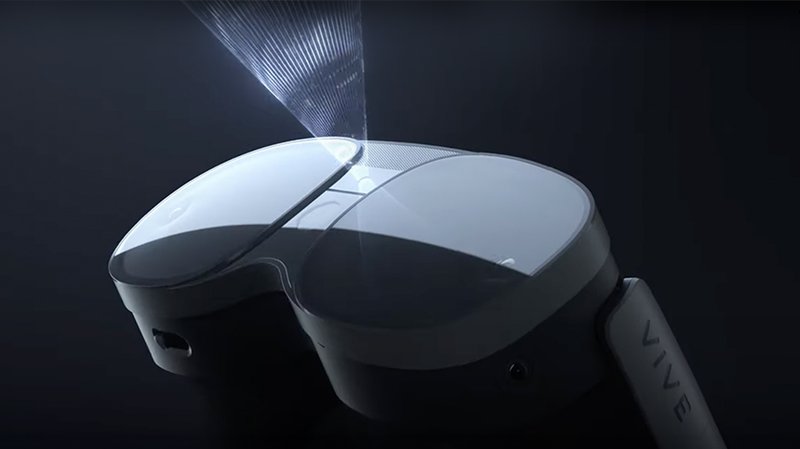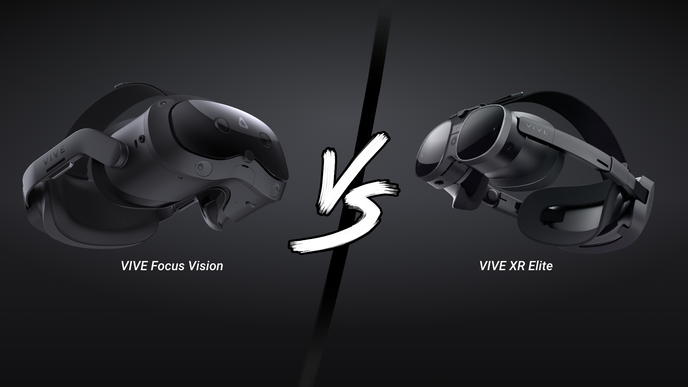How Depth Sensors Revolutionize Virtual and Mixed Reality

Headsets
6-minute read
Imagine your home transforming into a canvas for your next great painting. You can choose any brush, any color, and paint on any wall. Thankfully, the graffiti on your ceiling is digital— all within the realm of extended reality (XR).
However, some of the most fascinating and practical use cases stem from the fusion of real-world and computer-generated elements in augmented reality (AR) and mixed reality (MR) .
Headsets have begun incorporating depth sensors to facilitate the integration of physical and digital realms. Today, let's take a look at depth-sensing technology and its significance and potential.
What are depth sensors?
Depth sensors or depth-sensing cameras are three-dimensional (3D) range finders collecting distance information across a field of view. They project a light or light pattern and capture light data that gets reflected back. By analyzing the disparities between the emitted and returned light, depth sensors are able to identify surfaces and objects and their respective distances.

Seamless blending of digital and real-world elements.
But why are depth-sensing cameras necessary in VR headsets?
Their importance lies in the ability to enhance a wide range of immersive and augmented experiences:
- Room-scale VR: Depth sensors empower users to navigate designated physical spaces, known as room-scale VR experiences. By accurately mapping the environment and detecting obstacles like furniture or pets, the sensors ensure that users remain within the predefined boundaries, preventing collisions with physical objects.
- Enhanced hand tracking: For applications that support hand-gesture control, the ability to accurately define the distances and positions of real-world and virtual objects and precisely track hand movements are crucial for smooth navigation within both physical and immersive environments.
- "Realistic" MR: The combination of depth information and visuals from real-time camera feeds enables pinpoint placement of digital objects and interaction in a physical environment.
- 3D scanning and 3D mesh generation: Depth-sensing cameras allow users to quickly scan their physical surroundings and objects within the space, creating precise 3D meshes. These meshes— which comprise vertices, edges, and faces—are fundamental data structures used in computer graphics and 3D modeling to replicate object shapes and surface contours in digital environments.
Time of flight and structured light sensors.
Time of flight (ToF) and structured light are two prevalent types of sensors.
A ToF depth sensor includes an emitter to project light, typically infrared, and a receiver to capture light reflections. The sensor calculates distances by measuring the time it takes for the light to travel from the emitter to the reflection point and back (known as the time of flight). ToF excels in long-range performance but offers less detail accuracy than structured light sensors and thus, these sensors are commonly used for environment mapping, AR, and person and object detection.
A structured light sensor projects a light pattern, consisting of thousands of infrared dots, onto the environment. The sensor then detects and reads the dots to build a depth map since dots that are closer will appear larger and dots that are farther will appear smaller. Structured light sensors are widely adopted in generating detailed depth profiles at close range, which are suitable for facial expression recognition and room-scale scanning.
VIVE XR Elite activates depth-sensing functionality.

VIVE XR Elite headset and its structured light depth sensor.
In the latest firmware update for VIVE XR Elite , the structured light depth sensor located at the front of the standalone headset is now enabled.
Some nascent advantages are enhanced accuracy and speed of 3D environment scanning and the generation of 3D meshes, which developers can utilize in the applications and experiences they are creating.
If you haven't seen this new feature in action, check out this Jelbee MR demo.
Incorporating depth sensors into VR headsets is pivotal in elevating the overall realism of computer-generated experiences. Accurate environment scanning and quick 3D mesh generation are just a few potential benefits, enabling the creation of lifelike digital representations and seamless integration of virtual objects into the real world.
As VR and AR technologies evolve, depth sensors will become increasingly indispensable, propelling advancements in immersive and augmented experiences and redefining the way the physical and digital interact.

